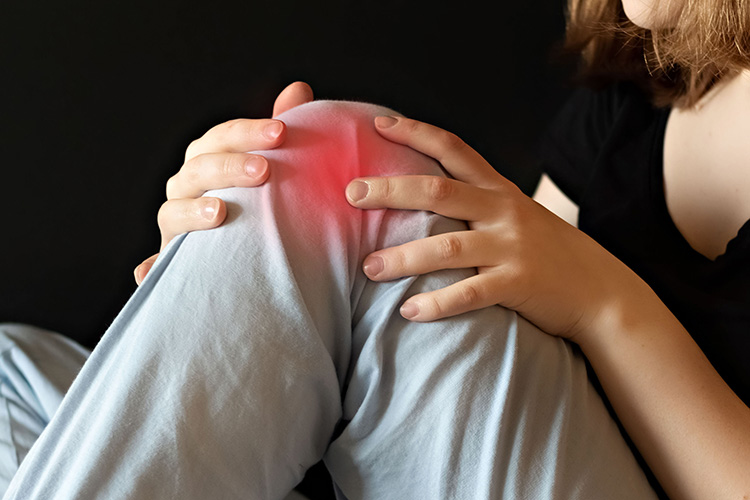
Table of Contents
Arthritis is a chronic condition characterized by inflammation in the joints, causing chronic pain, stiffness, and reduced mobility.
It affects millions of people worldwide, significantly impacting their daily lives and overall well-being. Unfortunately, I fall into this category.
Medications and therapy are the most conventional forms of arthritis treatment. However, conventional treatments such as therapy is not always that effective, and most medications have serious side effects.
In this blog post, I will explore the potential of natural remedies for relieving arthritis pain and improving quality of life.
I found that by adopting a holistic approach incorporating diet, exercise, and natural supplements, you can take proactive steps toward finding relief from the pain of arthritis and enhancing your overall health.
Common Forms and Symptoms of Arthritis
Arthritis is a term that encompasses various conditions characterized by inflammation and stiffness of the joints.
Here are some different types of arthritis along with their symptoms:
- Osteoarthritis: This is the most common type of arthritis, often associated with aging or wear and tear on the joints. Symptoms include painful joints, stiff joints, tenderness, limited range of motion, low back pain, and the development of bone spurs.
- Rheumatoid Arthritis: This is an autoimmune disease in which the body’s immune system mistakenly attacks the joints. Symptoms of this form of arthritis include joint pain, swelling, stiffness, fatigue, fever, and loss of appetite. It typically affects multiple joints symmetrically, such as both hands or knees.
- Psoriatic Arthritis: This type of arthritis is associated with psoriasis, a skin condition characterized by red, scaly patches. Symptoms can include joint pain, swelling, stiffness, redness, and pitting of the nails. Psoriatic arthritis may affect any joint, including the spine.
- Gout: Gout is caused by the buildup of uric acid crystals in the joints, leading to sudden and severe attacks of joint pain, redness, swelling, and warmth, frequently affecting the big toe. Gout attacks can be triggered by certain foods, alcohol, medications, and dehydration.
- Juvenile Arthritis: This refers to arthritis that occurs in children and teenagers (under the age of 16). Symptoms of the affected joint can vary but may include joint pain, swelling, stiffness, limping, fatigue, and difficulty with daily activities.
It’s important to note that the symptoms of arthritis can vary in intensity and may come and go over time.
Diet for Arthritis Pain Relief
A healthy and balanced diet plays an important role in managing arthritis symptoms.
A well-rounded diet can help reduce inflammation, ease pain, and improve overall joint health by providing the body with essential nutrients, antioxidants, and anti-inflammatory compounds.
Omega-3 Fatty Acids
One key component of an arthritis-friendly diet is incorporating foods rich in omega-3 fatty acids.
Omega-3s have been shown to have potent anti-inflammatory properties.
Fatty fish like salmon, sardines, and mackerel are excellent sources of omega-3s.
Omega-3 fish oil capsules are a great way for people who do not like fish.
Plant-based sources such as flaxseeds and chia seeds also contain these beneficial fatty acids.
Including these foods in the diet can help reduce inflammation in the joints and alleviate arthritis symptoms.
Fruits and Vegetables
Another essential aspect of an arthritis-friendly diet is increasing the consumption of fruits and vegetables.
Berries, such as strawberries, blueberries, and cherries, are packed with antioxidants and phytonutrients that help combat inflammation.
Leafy greens like spinach, kale, and Swiss chard are abundant in vitamins, minerals, and antioxidants that support joint health.
Cruciferous vegetables like broccoli, cauliflower, and Brussels sprouts contain compounds that can help reduce inflammation and provide necessary nutrients for joint maintenance.
Stay Away From Processed Foods
In contrast, reducing the intake of processed foods, sugar, and saturated fats is equally important.
Processed foods often contain high levels of additives, preservatives, and trans fats, contributing to inflammation and worsening arthritis symptoms.
Sugar, especially refined sugar, can trigger an inflammatory response in the body.
Saturated fats, commonly found in fatty meats, fried foods, and full-fat dairy products, may promote inflammation and joint discomfort.
By minimizing the consumption of these foods, individuals can help alleviate inflammation and manage their arthritis symptoms more effectively.
Incorporating a healthy and balanced diet that includes omega-3-rich foods, fruits, vegetables, and reducing processed foods, sugar, and saturated fats can have a positive impact on managing arthritis symptoms.
However, consulting with a healthcare professional or registered dietitian is essential to develop a personalized dietary plan that suits individual needs and health conditions.
Exercise for Arthritis Pain Relief
Regular physical activity plays a significant role in managing arthritis symptoms by improving joint flexibility, increasing blood flow, and reducing pain.
Engaging in appropriate exercises can help maintain joint function, strengthen muscles around the joints, and enhance overall mobility.
Low Impact Exercises
For individuals with arthritis, low-impact exercises are often recommended as they put less stress on the joints.
Walking is a simple and accessible exercise that can be easily incorporated into daily routines.
It helps improve cardiovascular health, strengthens leg muscles, and supports joint mobility.
Swimming and water aerobics are excellent options as they provide a supportive and buoyant environment, reducing the impact on joints while allowing for a full-body workout.
Cycling outdoors or on a stationary bike is another low-impact exercise that helps improve joint flexibility and strengthen the lower body.
Incorporate Strength Training
In addition to low-impact exercises, incorporating strength training into the exercise routine can benefit individuals with arthritis.
Strength training helps build muscle mass, which provides added support to the joints.
It can be done using resistance bands, weight machines, or bodyweight exercises.
Focusing on strengthening muscles around the affected joints, such as the quadriceps for knee arthritis, can help improve joint stability and reduce pain.
Strength training is by far my favorite form of exercise.
I always stay in the moderate to light weight range (8-25 reps) and keep cooldowns between sets to 15 to 30 seconds max. Then, there will be 1 to 2 minutes of rest between exercises. This still allows for an intense workout that provides muscle growth.
Prioritize Safety
When engaging in physical activity, it is important to prioritize safety. Some tips for exercising safely with arthritis include:
- Start slow: Begin with shorter durations and lower intensity exercises, gradually increasing as tolerated.
- Warm-up: Before exercising, warm up by doing light stretching or gentle movements to prepare the muscles and joints. If strength training, perform the exercise with a lightweight for your warmup. This also acts as a pre-exhaust, which allows for a more intense workout with lighter weights.
- Listen to your body: Pay attention to any discomfort or pain during exercise. If an exercise causes increased pain or inflammation, modify or stop it.
- Choose the right footwear and equipment: Wear comfortable shoes with proper support to minimize joint stress. Use equipment that is suitable for your abilities and needs.
- Stay hydrated: Drink plenty of water before, during, and after exercise to prevent dehydration and maintain joint lubrication.
- Consult with a healthcare professional: It is crucial to seek guidance from a healthcare professional or physical therapist who can provide personalized advice based on individual needs and limitations.
By incorporating regular physical activity, specifically low-impact exercises and strength training, individuals with arthritis can improve joint flexibility, reduce pain, and enhance overall joint health.
However, consulting with a healthcare professional before starting any exercise program is important to ensure it is safe and tailored to individual circumstances.
Natural Herbal Supplements for Arthritis Pain Relief
Several natural supplements have gained popularity for their potential to alleviate arthritis pain and improve joint health, along with other health benefits.
Three of the most well-known herbal remedies in this regard are turmeric, ginger, and boswellia.
These natural supplements work by targeting different pathways involved in inflammation.
They can help reduce the production of inflammatory compounds in the body and modulate the body’s immune response to inflammation.
By doing so, they may provide relief from arthritis pain and support joint health.
Turmeric
Turmeric, a spice commonly used in Indian cuisine, contains an active compound called curcumin.
Curcumin possesses strong anti-inflammatory properties and has been shown to inhibit certain molecules that play a role in inflammation.
By reducing inflammation in the joints, turmeric may help alleviate arthritis pain and improve joint function.
Ginger
Ginger is another natural supplement with anti-inflammatory properties.
It contains gingerol, which has been found to inhibit the production of inflammatory compounds in the body.
Studies suggest ginger may help reduce joint pain and stiffness, particularly in individuals with osteoarthritis or rheumatoid arthritis.
Boswellia
Boswellia, also known as Indian frankincense, is derived from the resin of Boswellia trees.
It contains boswellic acids, which have been found to exhibit anti-inflammatory effects.
These compounds may help reduce inflammation in the joints, improve joint mobility, and alleviate arthritis symptoms.
Always Check With Your Doctor First
While these supplements show promise, consulting with your healthcare provider before incorporating them into your regimen is important.
They can provide guidance on appropriate dosages, potential interactions with medications or existing health conditions and help monitor for any adverse effects.
Some supplements may interact with certain medications, such as blood thinners or immune system suppressants, and may not be suitable for everyone.
A healthcare professional can help ensure that the chosen supplements are safe and effective for individual circumstances.
Conclusion
In conclusion, finding natural relief from arthritis pain may seem daunting. Still, incorporating these three lifestyle changes into your daily routine can alleviate the discomfort and improve your overall quality of life.
Remember, starting with a healthy and balanced diet can help reduce inflammation and joint pain.
Combining a regular exercise routine with low-impact activities like swimming or yoga can also strengthen muscles and improve flexibility, ultimately reducing pressure on the joints.
And don’t forget about the power of natural dietary supplements in providing additional support for joint health.
Whether you try turmeric for its anti-inflammatory properties or opt for omega-3 fatty acids found in fish oils, these supplements can significantly reduce arthritis symptoms.
So take charge of our health and make positive changes towards a pain-free lifestyle!
Choose one or all three of these methods to see which works best for you and share your success stories with us in the comments below.
Let’s spread knowledge and empower each other to live our lives to the fullest, despite arthritis pain.
Remember, never give up hope – there are always options available to find relief from pain naturally so you can live your best life!
Note: While natural remedies can provide relief for arthritis pain, you should always consult with healthcare professionals before making any significant changes to your medical treatment, diet, exercise routine, or starting new supplements. Individual responses to natural home remedies may vary, and what works for one person may not work for another.






